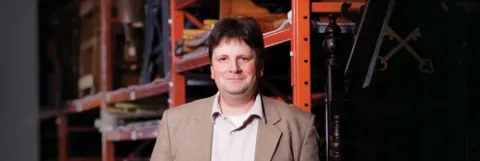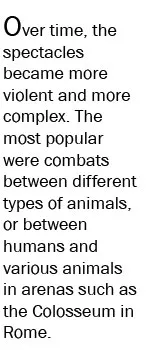Featured: Dr. Christopher Epplett
Image


From the Roman Empire to Animal Conservation
How studying the past can influence the future.
Thomas Carlyle asked, “What is all knowledge too but recorded experience, and a product of history; of which, therefore, reasoning and belief, no less than action and passion are essential materials?” Records of experience can be oral, written, painted on vases or minted on coins.
For historians, seeing the whole picture and understanding it involves not only looking at these records, but also relying on the imagination, one of our most impressive qualities.
Dr. Christopher Epplett teaches in the History Department at the University of Lethbridge, and has broad research interests that include ancient military and social history, particularly that of the Hellenistic world and the later Roman Empire.

Chris’s particular interest, though, is spectacles, such as gladiatorial combats, in the ancient world. He wrote his dissertation on the Roman beast-hunts, and he has published a number of articles on the same subject. He is one of a handful of historians studying beast-hunts. Some might know him from his participation in a documentary on the Roman spectacles, a program that is periodically shown on the History Channel.
His main research project is preparing a book manuscript on the Roman beast-hunts/exotic animal spectacles that were popular in the Roman Empire. These started as the parading of animals, such as elephants, captured in warfare during the expansion of the empire.
Over time, the spectacles became more violent and more complex. The most popular were combats between different types of animals, or between humans and various animals in arenas such as the Colosseum in Rome.
A full day of entertainment at the arena might include a morning beast-hunt, and a mid-day pause when criminals would be executed, sometimes involving one or more animals. Most of us would think of the example of Christians being thrown to the lions. The afternoons would feature gladiatorial contests.
Records show that beast-hunts included any exotic animals the Romans could get their hands on. Bears and bulls were readily available throughout the empire. Other animals included lions, elephants, tigers, giraffes, rhinoceroses, and in aquatic spectacles, hippopotami and crocodiles.
These spectacles served important symbolic roles, showing Rome’s control over the known world, advertising territories that were added to the Roman state, and demonstrating the power of the empire and the emperor. They were examples of how humans try to dominate the environment symbolically, if not literally.
The contemporary relevance of studying this material relates to the present widespread concern about humanity’s impact on the environment and animal rights. One focus of Chris’s book is how disastrous the spectacle practices were on the animal populations of the time, which ties into current concerns about animal extinction and conservation.
Perhaps Chris’s most evident work in the local community is as a member of the Galt Museum &

Knowledge of local history can help a community in moving forward in a direction that’s consistent with the direction it has chosen in the past. Awareness of all the accomplishments of citizens in the past builds pride and a sense of community.
His role on the board of the Galt is advisory. Chris, as well as the other members of the board, suggests directions for the museum to take in upcoming exhibits, strategies for fundraising, and ways to increase awareness of the Galt in the community and at various levels of government. He assists the very capable staff in ensuring that the Galt has a broad appeal through its successful programmes.
Chris explains it is important for the university and its academic staff to support the community hosting and supporting the institution, to play an active role in the community.
"I think it’s the responsibility of the university, as far as possible, to ensure that its programmes and its graduates are well-prepared to serve the community and perform a useful function.” He believes those who study history and have a good grasp of it are particularly well-rounded citizens and they are, therefore, ideally suited to contribute to their community.
Written by Eric Low, as published in Lethbridge Living, Winter 2008
